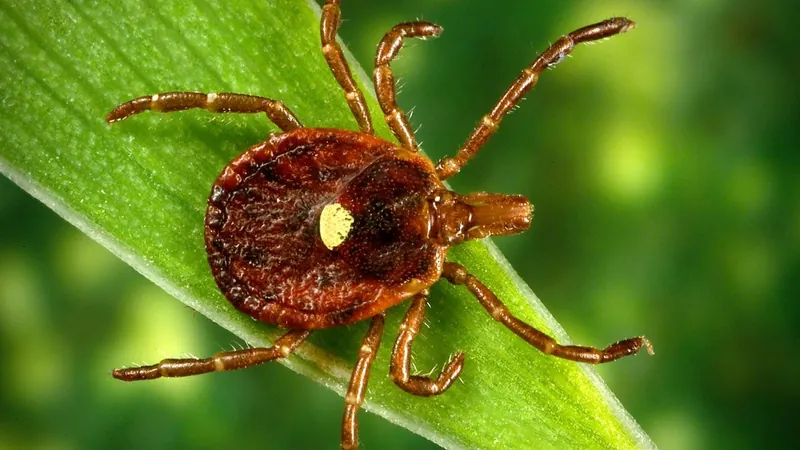
Beware: Tick Invasion Alert Across Indiana! Find Out Which Ones Are Dangerous
2025-05-21
Author: Jia
As summer approaches, Indiana is experiencing a surge of ticks, and while there are no massive illness reports yet, experts warn that this could change! Hoosiers are finding ticks on themselves and their pets, raising concerns about potential infections.
Lee Green, senior medical entomologist at the Indiana Department of Health, reported a significant increase in tick populations this year. The tricky part? Most of these ticks are in their nymph stage—tiny and nearly invisible to the naked eye, but often the culprits behind transmitting Lyme disease.
The New Players in the Tick Game
Indiana residents should watch out for new tick species making their presence felt. The Gulf Coast tick, first recognized in the state in 2017-18, is being spotted in 14 counties across central and southern Indiana. Like the American dog tick, these newcomers are difficult to distinguish but could carry dangerous pathogens.
Even newer still is the Asian longhorned tick, which has recently invaded the U.S. It poses a risk to livestock rather than humans for now, but its presence raises questions about potential diseases in the future.
Tick-Borne Illnesses: What You Need to Know
With around 300-400 tick-related cases reported annually in Indiana, Lyme disease takes center stage—especially in the northwest region. Watch for the notorious bull's-eye rash characteristic of Lyme, while southern Indiana sees cases of Rocky Mountain spotted fever and ehrlichiosis. But that’s not all; two worrying ticks are now believed to carry the Bourbon and Powassan viruses, leaving victims feeling miserable without antibiotic options.
Alpha-Gal Syndrome: A Hidden Threat
One of the scariest risks is alpha-gal syndrome, an allergy to red meat transmitted by lone star ticks. After a bite, some may find themselves unable to eat beef or pork without suffering severe allergic reactions. The only way to uncover this allergy is through specific blood tests.
Tick Identification: Know Your Enemies
Indiana is home to six tick species known to carry diseases: the American dog tick, black-legged tick, brown dog tick, Gulf Coast tick, lone star tick, and the newly arrived Asian longhorned tick. Each carries multiple pathogens, adding to the risk.
Reports of tick sightings are surging, with numerous American dog ticks discovered indoors and lone star ticks found on people. The Indiana health department encourages the public to report their tick encounters, helping to track these pests more effectively.
Best Defense: Don't Be a Tick Magnet!
Experts advocate for precautions: wear long sleeves and pants treated with permethrin, use DEET or similar repellents on exposed skin, and check for ticks after outdoor activities. High humidity is a tick's best friend, so modify your landscape to deter them.
Post-bite, carefully remove any attached tick and monitor for symptoms. If you notice a rash, fever, or swelling, seek medical attention promptly.
Summer Activities: Stay Vigilant!
With outdoor activities ramping up, it’s crucial to stay vigilant against ticks. Make prevention a priority and stay informed to enjoy a tick-free summer in Indiana!




 Brasil (PT)
Brasil (PT)
 Canada (EN)
Canada (EN)
 Chile (ES)
Chile (ES)
 Česko (CS)
Česko (CS)
 대한민국 (KO)
대한민국 (KO)
 España (ES)
España (ES)
 France (FR)
France (FR)
 Hong Kong (EN)
Hong Kong (EN)
 Italia (IT)
Italia (IT)
 日本 (JA)
日本 (JA)
 Magyarország (HU)
Magyarország (HU)
 Norge (NO)
Norge (NO)
 Polska (PL)
Polska (PL)
 Schweiz (DE)
Schweiz (DE)
 Singapore (EN)
Singapore (EN)
 Sverige (SV)
Sverige (SV)
 Suomi (FI)
Suomi (FI)
 Türkiye (TR)
Türkiye (TR)
 الإمارات العربية المتحدة (AR)
الإمارات العربية المتحدة (AR)